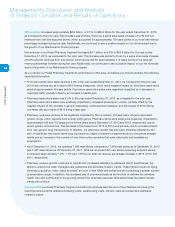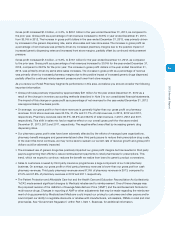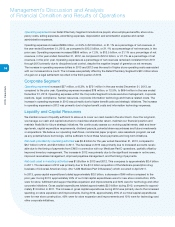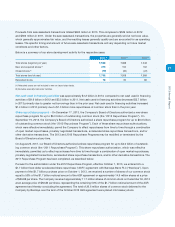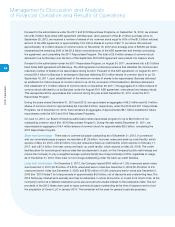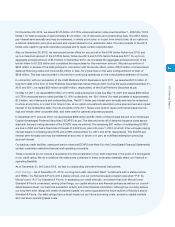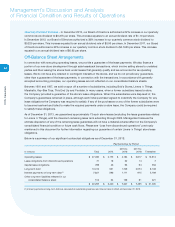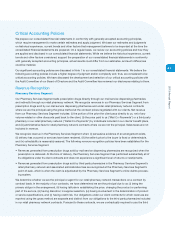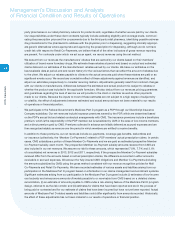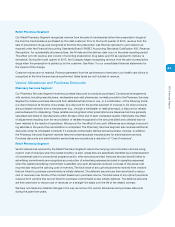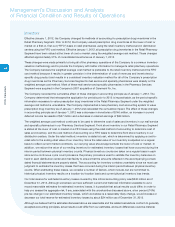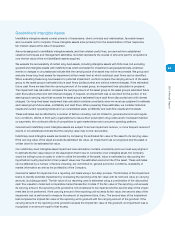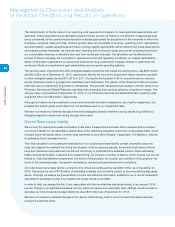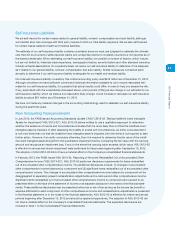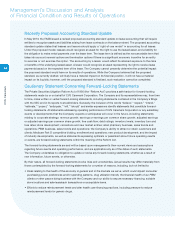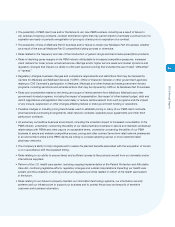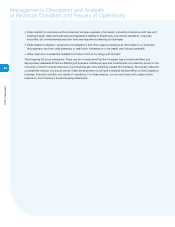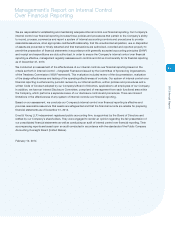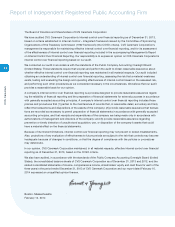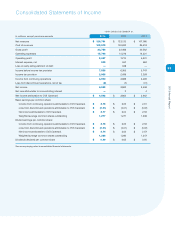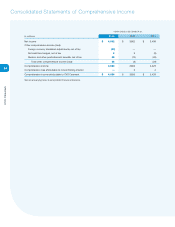CVS 2013 Annual Report Download - page 46
Download and view the complete annual report
Please find page 46 of the 2013 CVS annual report below. You can navigate through the pages in the report by either clicking on the pages listed below, or by using the keyword search tool below to find specific information within the annual report.
Management’s Discussion and Analysis
of Financial Condition and Results of Operations
44
CVS Caremark
Inventory
Effective January 1, 2012, the Company changed its methods of accounting for prescription drug inventories in the
Retail Pharmacy Segment. Prior to 2012, the Company valued prescription drug inventories at the lower of cost or
market on a first-in, first-out (“FIFO”) basis in retail pharmacies using the retail inventory method and in distribution
centers using the FIFO cost method. Effective January 1, 2012, all prescription drug inventories in the Retail Pharmacy
Segment have been valued at the lower of cost or market using the weighted average cost method. These changes
affected approximately 51% of consolidated inventories as of January 1, 2012.
These changes were made primarily to bring all of the pharmacy operations of the Company to a common inventory
valuation methodology and to provide the Company with better information to manage its retail pharmacy operations.
The Company believes the weighted average cost method is preferable to the retail inventory method and the FIFO
cost method because it results in greater precision in the determination of cost of revenues and inventories by
specific drug product and results in a consistent inventory valuation method for all of the Company’s prescription
drug inventories as the Pharmacy Services Segment’s mail service and specialty pharmacies were already on the
weighted average cost method. Most of these mail service and specialty pharmacies in the Pharmacy Services
Segment were acquired in the Company’s 2007 acquisition of Caremark Rx, Inc.
The Company recorded the cumulative effect of these changes in accounting principle as of January 1, 2012. The
Company determined that retrospective application for periods prior to 2012 is impracticable, as the period-specific
information necessary to value prescription drug inventories in the Retail Pharmacy Segment under the weighted
average cost method is unavailable. The Company implemented a new pharmacy cost accounting system to value
prescription drug inventory as of January 1, 2012 and calculated the cumulative impact. The effect of these changes
in accounting principle as of January 1, 2012 was a decrease in inventories of $146 million, an increase in current
deferred income tax assets of $57 million and a decrease in retained earnings of $89 million.
The weighted average cost method continues to be used to determine cost of sales and inventory in our mail service
and specialty pharmacies in our Pharmacy Services Segment. Front store inventory in our Retail Pharmacy Segment
is stated at the lower of cost or market on a FIFO basis using the retail method of accounting to determine cost of
sales and inventory, and the cost method of accounting on a FIFO basis to determine front store inventory in our
distribution centers. Under the retail method, inventory is stated at cost, which is determined by applying a cost-to-
retail ratio to the ending retail value of our inventory. Since the retail value of our inventory is adjusted on a regular
basis to reflect current market conditions, our carrying value should approximate the lower of cost or market. In
addition, we reduce the value of our ending inventory for estimated inventory losses that have occurred during the
interim period between physical inventory counts. Physical inventory counts are taken on a regular basis in each
store and a continuous cycle count process is the primary procedure used to validate the inventory balances on
hand in each distribution center and mail facility to ensure that the amounts reflected in the accompanying consoli-
dated financial statements are properly stated. The accounting for inventory contains uncertainty since we must use
judgment to estimate the inventory losses that have occurred during the interim period between physical inventory
counts. When estimating these losses, we consider a number of factors, which include, but are not limited to,
historical physical inventory results on a location-by-location basis and current physical inventory loss trends.
Our total reserve for estimated inventory losses covered by this critical accounting policy was $240 million as of
December 31, 2013. Although we believe we have sufficient current and historical information available to us to
record reasonable estimates for estimated inventory losses, it is possible that actual results could differ. In order to
help you assess the aggregate risk, if any, associated with the uncertainties discussed above, a ten percent (10%)
pre-tax change in our estimated inventory losses, which we believe is a reasonably likely change, would increase or
decrease our total reserve for estimated inventory losses by about $24 million as of December 31, 2013.
Although we believe that the estimates discussed above are reasonable and the related calculations conform to generally
accepted accounting principles, actual results could differ from our estimates, and such differences could be material.


